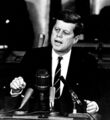Template:Selected anniversaries/May 29: Difference between revisions
Jump to navigation
Jump to search
No edit summary |
No edit summary |
||
| Line 1: | Line 1: | ||
<gallery> | <gallery> | ||
||1453 | ||1453: Fall of Constantinople: Ottoman armies under Sultan Mehmed II Fatih capture Constantinople after a 53-day siege, ending the Byzantine Empire. | ||
||1660: Frans van Schooten dies ... mathematician and academic. | |||
||1675: Humphry Ditton born ... mathematician and philosopher (d. 1715) | |||
||1675 | |||
File:John Mudge.jpg|link=John Mudge (nonfiction)|1777: Physician and engineer [[John Mudge (nonfiction)|John Mudge]] elected a Fellow of the Royal Society, and in the same year was awarded the Copley medal for his 'Directions for making the best Composition for the Metals for reflecting Telescopes; together with a Description of the Process for Grinding, Polishing, and giving the great Speculum the true Parabolic Curve'. | File:John Mudge.jpg|link=John Mudge (nonfiction)|1777: Physician and engineer [[John Mudge (nonfiction)|John Mudge]] elected a Fellow of the Royal Society, and in the same year was awarded the Copley medal for his 'Directions for making the best Composition for the Metals for reflecting Telescopes; together with a Description of the Process for Grinding, Polishing, and giving the great Speculum the true Parabolic Curve'. | ||
||1780 | ||1780: Henri Braconnot born ... chemist and pharmacist. | ||
||John Walker | ||1781: John Walker born ... invented the friction match. | ||
||1794 | ||1794: Johann Heinrich von Mädler born ... astronomer and selenographer (d. 1874) | ||
||1823 | ||1823: John H. Balsley born ... carpenter and inventor. | ||
||1829 | ||1829: Humphry Davy dies ... chemist and academic. | ||
||Harry Bateman | ||1882: Harry Bateman born ... mathematician. | ||
||Charles Loewner | ||1893: Charles Loewner born ... mathematician. One of his central mathematical contributions is the proof of the Bieberbach conjecture in the first highly nontrivial case of the third coefficient. The technique he introduced, the Loewner differential equation, has had far-reaching implications in geometric function theory. Pic. | ||
||Gerrit Bol | ||1906: Gerrit Bol born ... mathematician, who specialized in geometry. He is known for introducing Bol loops in 1937, and Bol’s conjecture on sextactic points. Pic. | ||
||George Szekeres | ||1911: George Szekeres born ... mathematician. He will discover the Szekeres snark, a snark with 50 vertices and 75 edges. Pic. | ||
File:John F. Kennedy moon mission speech.jpg|link=John F. Kennedy (nonfiction)|1917: Politician [[John F. Kennedy (nonfiction)|John F. Kennedy]], 35th President of the United States, born. | File:John F. Kennedy moon mission speech.jpg|link=John F. Kennedy (nonfiction)|1917: Politician [[John F. Kennedy (nonfiction)|John F. Kennedy]], 35th President of the United States, born. | ||
| Line 32: | Line 30: | ||
File:Arthur Stanley Eddington.jpg|link=Albert Einstein (nonfiction)|1919: [[Arthur Eddington (nonfiction)|Arthur Eddington]] and Andrew Claude de la Cherois Crommelin view a solar eclipse as a test of [[Albert Einstein (nonfiction)|Einstein]]'s theory of general relativity. | File:Arthur Stanley Eddington.jpg|link=Albert Einstein (nonfiction)|1919: [[Arthur Eddington (nonfiction)|Arthur Eddington]] and Andrew Claude de la Cherois Crommelin view a solar eclipse as a test of [[Albert Einstein (nonfiction)|Einstein]]'s theory of general relativity. | ||
||John Charles Harsanyi | ||1920: John Charles Harsanyi born ... economist. He is best known for his contributions to the study of game theory and its application to economics, specifically for his developing the highly innovative analysis of games of incomplete information, so-called Bayesian games. He also made important contributions to the use of game theory and economic reasoning in political and moral philosophy. | ||
||1921 | ||1921: Norman Hetherington born ... cartoonist and puppeteer. | ||
||1929: Mathematician Günter Lumer born. He will work in functional analysis. He is the namesake of the Lumer–Phillips theorem on semigroups of operators on Banach spaces, and was the first to study semi-inner-products. Pic. | ||1929: Mathematician Günter Lumer born. He will work in functional analysis. He is the namesake of the Lumer–Phillips theorem on semigroups of operators on Banach spaces, and was the first to study semi-inner-products. Pic. | ||
||John "Jack" Roland Redman | ||1970: John "Jack" Roland Redman ... admiral in the United States Navy. A naval communications officer, he played key roles in signals intelligence during World War II in Washington, D.C., and on the staff of Admiral Chester W. Nimitz. | ||
|link=International Space Station (nonfiction)|1999: Space Shuttle ''Discovery'' completes the first docking with the [[International Space Station (nonfiction)|International Space Station]]. | |link=International Space Station (nonfiction)|1999: Space Shuttle ''Discovery'' completes the first docking with the [[International Space Station (nonfiction)|International Space Station]]. | ||
||Kazimierz Urbanik | ||2005: Mathematician Kazimierz Urbanik dies. He founded the journal Probability and Mathematical Statistics and served as rector of the University of Wrocław. Pic. | ||
||2014 | ||2014: Peter Glaser dies ... scientist and engineer. | ||
</gallery> | </gallery> | ||
Revision as of 06:41, 21 August 2018
1777: Physician and engineer John Mudge elected a Fellow of the Royal Society, and in the same year was awarded the Copley medal for his 'Directions for making the best Composition for the Metals for reflecting Telescopes; together with a Description of the Process for Grinding, Polishing, and giving the great Speculum the true Parabolic Curve'.
1917: Politician John F. Kennedy, 35th President of the United States, born.
1919: Arthur Eddington and Andrew Claude de la Cherois Crommelin view a solar eclipse as a test of Einstein's theory of general relativity.


